Saturday, June 15
Plenary: “Randomized Controlled Blinded Trial Design & Conduct: Challenges-Pitfalls-Solutions”
Dick Clarke, CHT-Admin
About the Lecture:
Much of the practice of hyperbaric medicine lacks supportive high-quality efficacy and even compelling effectiveness evidence. Treatment decisions are based on various combinations of basic science research, other pre-clinical data, some prospective but mainly retrospective case reporting (invariably uncontrolled), textbook chapters, meeting Abstracts, and the essential matching of disease pathophysiology with one or more hyperbaric mechanisms, arguing biological plausibility. Except for one historic close call involving Blue Cross Blue Shield, the practice of hyperbaric medicine within the United States continues to skirt evidence-based medicine’s increasingly focused microscope.
The goals of this presentation, then, are twofold. First it is to provide something of a tutorial on how hyperbaric medicine trial design and conduct can best be optimized. Several studies will be critiqued in the context of what lessons can and should be learned. The second and more vital goal is to stimulate research interest in addressing hyperbaric medicine’s fragile scientific evidence footing through development of clinical trials that employ “Gold Standard” methodology.
About the Speaker: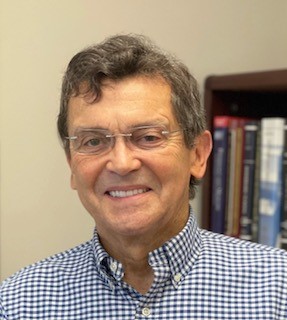 President National Baromedical Services
President National Baromedical Services
President National Board of Diving & Hyperbaric Medical Technology
Dick assumed the position of president of the National Board of Diving & Hyperbaric Medical Technology in January, 2009, having previously held this position from 1989-1995. Dick’s background includes service in the British Navy, diving instructor and underwater photographer at the International Underwater Explorers Society and assistant director of the seabed living program ‘Hydrolab’. In 1976, Dick was instrumental in the development of the diver medic program at the Commercial Diving Center, while employed as a saturation diving superintendent with Oceaneering International. Dick taught the diving medicine section from 1976 - 1983 and helped establish the National Association of Diver Medic Technicians, the fore runner of the NBDHMT. He wrote the Board’s first CHT exam. Over the past two decades Dick remains involved in all aspects of undersea and hyperbaric medicine, technology, education and research. His organization has trained over 6,000 healthcare professionals and he has served as a faculty member for the annual NOAA-UHMS Diving Medical Officer Training Course for the past 25 years. Dick has been active within the UHMS, chairing numerous committees and was the UHMS Associates first elected chairman. He heads a research foundation dedicated to the scientific advancement of hyperbaric medicine, and has developed an international consortium that undertakes wide-ranging controlled clinical trials.
Plenary: Shortage of 24/7 Facilities
Jim Chimiak, MD
About the Lecture
The decreasing availability of hyperbaric chambers for treating indicated emergency conditions continues. A variety of factors impact the situation. This presentation summarizes the current situation, measures currently employed, possible solutions, and the positive impact that current HBO2 research could have.
About the Speaker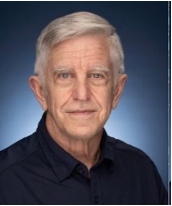 Dr. Chimiak is the Chief Medical Officer for DAN. He is triple boarded in Anesthesiology, Pain Management and Hyperbaric Medicine. Qualified as US Navy Special Operations, Flight Surgeon and Undersea/Saturation Diving Medical officers. He is co-chair of the dive committee for the UHMS.
Dr. Chimiak is the Chief Medical Officer for DAN. He is triple boarded in Anesthesiology, Pain Management and Hyperbaric Medicine. Qualified as US Navy Special Operations, Flight Surgeon and Undersea/Saturation Diving Medical officers. He is co-chair of the dive committee for the UHMS.
Plenary: Mass CO poisoning
Geness Koumandakis, CHT
About the Lecture:
This lecture will be on a recent mass CO poisoning event in Utah. Geness will review carbon monoxide cases, and discuss how Intermountain Health Hyperbaric department is working on developing a protocol of challenges to consider and obstacles that often get in the way.
About the Speaker: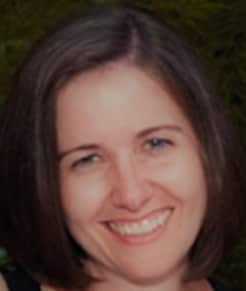 Geness Koumandakis has been a registered respiratory therapist for 24 years and has been practicing critical care hyperbaric medicine for 22 of those years. She is currently the Hyperbaric Coordinator and Safety Director for LDS Hospital and Intermountain Medical Center in Salt Lake City, Utah. Koumandakis has been instrumental in training fellows from the Duke University hyperbaric fellowship program and has many years of experience as a clinical educator and presenter for various respiratory therapy, nursing, and nurse practitioner programs as well as the University of Utah pulmonary fellowship program. She has been a course instructor for multiple hyperbaric courses, including a course on critical care hyperbaric medicine. Koumandakis has been actively involved in multiple hyperbaric research studies and has co-authored several abstracts, journal articles, and recently co-authored a wound care book chapter. She has presented two of these abstracts at the UHMS conference and is the recipient of the 2019 UHMS Paul C. Baker award for hyperbaric oxygen therapy safety excellence. She currently sits on multiple hyperbaric oversight committees for Intermountain Healthcare and the UHMS.
Geness Koumandakis has been a registered respiratory therapist for 24 years and has been practicing critical care hyperbaric medicine for 22 of those years. She is currently the Hyperbaric Coordinator and Safety Director for LDS Hospital and Intermountain Medical Center in Salt Lake City, Utah. Koumandakis has been instrumental in training fellows from the Duke University hyperbaric fellowship program and has many years of experience as a clinical educator and presenter for various respiratory therapy, nursing, and nurse practitioner programs as well as the University of Utah pulmonary fellowship program. She has been a course instructor for multiple hyperbaric courses, including a course on critical care hyperbaric medicine. Koumandakis has been actively involved in multiple hyperbaric research studies and has co-authored several abstracts, journal articles, and recently co-authored a wound care book chapter. She has presented two of these abstracts at the UHMS conference and is the recipient of the 2019 UHMS Paul C. Baker award for hyperbaric oxygen therapy safety excellence. She currently sits on multiple hyperbaric oversight committees for Intermountain Healthcare and the UHMS.
Plenary: DCI treatment debate: Shorter oxygen exposures vs US Navy treatment tables: Pablo Medina, MD (Pros) &
US Navy Treatment Tables are the Gold Standard for Treatment of Decompression Illness: Richard Moon, MD (Cons)
About the Lecture:
Dr. Medina: Introduction to Short No-Air Break Tables with an expanded knowledge of one table in particular (Hart-Kindwall) and comparison of this table with the USN TT6. Dr. Moon will will argue that the standard of care for treatment of decompression illness is use of US Navy Treatment.
Dr. Moon will argue that the standard of care for treatment of decompression illness is use of US Navy Treatment.
The lecture will review the history of treatments for decompression illness (DCI) and the development of oxygen treatment tables, which addressed the shortcomings of earlier treatment methods. In the community few physicians have experience with DCI and the awareness of data regarding the outcomes after various treatments. This lecture will address those needs.
About the Speakers:
Pablo Medina, MD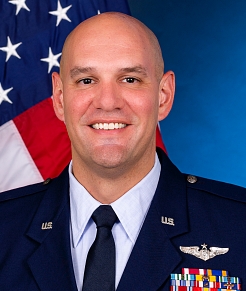
U.S. Air Force Lieutenant Colonel Pablo Medina, current Program Director for the San Antonio Uniformed Services Health Education Consortium Undersea & Hyperbaric Medicine Fellowship Program and Medical Director for the Brooke Army Medical Center Division of Undersea & Hyperbaric Medicine.
Richard Moon, MD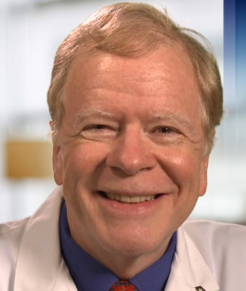 Dr. Richard Moon earned BSc and MD degrees at McGill University. He trained in internal medicine and biomedical engineering at the University of Toronto, then in pulmonary and critical care medicine, followed by anesthesiology at Duke University. He joined the Duke University faculty in 1983. He is Professor of Anesthesiology, Professor of Medicine and Medical Director of the Duke Center for Hyperbaric Medicine & Environmental Physiology. His research has included physiology of immersion and predictors of arterial PCO2 during underwater exercise. He has been particularly interested in causes and prevention of immersion pulmonary edema, use of an experimental breathing gas (perfluoromethane) to decrease decompression requirements after heliox dives, mechanisms of death during triathlons, causes of perioperative opioid-induced respiratory depression, and improved monitoring techniques for monitoring patients to detect it. His awards include the Mentorship Award from the AMA-Women Physicians Congress Physician Mentor Recognition Program, Leonard Palumbo Jr, MD Faculty Achievement Award for compassionate patient care and excellence in the teaching and mentoring of young physicians, Duke awards for Excellence in Medical Student Education and two awards as Duke Anesthesiology Teacher of the Year.
Dr. Richard Moon earned BSc and MD degrees at McGill University. He trained in internal medicine and biomedical engineering at the University of Toronto, then in pulmonary and critical care medicine, followed by anesthesiology at Duke University. He joined the Duke University faculty in 1983. He is Professor of Anesthesiology, Professor of Medicine and Medical Director of the Duke Center for Hyperbaric Medicine & Environmental Physiology. His research has included physiology of immersion and predictors of arterial PCO2 during underwater exercise. He has been particularly interested in causes and prevention of immersion pulmonary edema, use of an experimental breathing gas (perfluoromethane) to decrease decompression requirements after heliox dives, mechanisms of death during triathlons, causes of perioperative opioid-induced respiratory depression, and improved monitoring techniques for monitoring patients to detect it. His awards include the Mentorship Award from the AMA-Women Physicians Congress Physician Mentor Recognition Program, Leonard Palumbo Jr, MD Faculty Achievement Award for compassionate patient care and excellence in the teaching and mentoring of young physicians, Duke awards for Excellence in Medical Student Education and two awards as Duke Anesthesiology Teacher of the Year.
Plenary: Techs going off the reservation: Or, Upholding the CHT Code of Conduct
Dick Clarke, CHT-Admin
About the Lecture
This presentation will summarize the genesis of the National Board of Diving & Hyperbaric Medical Technology (www.nbdhmt.org) and describe its certification programs. It will address Certification in Hyperbaric Technology in the context of a history of inappropriate professional behaviors that prompted introduction of the CHT Code of Conduct, in 2009. This Code outlines a set of rules that collectively represent responsibilities and practice expectations that reflect positively on the NBDHMT, the practice of hyperbaric medicine, and related patient safety. CHTs are required to document their Code of Conduct attestation upon initial certification and during each instance of recertification.
The presentation will then describe instances and provide examples where violations of the Code of Conduct appear to have taken place. The process by which the NBDHMT investigates these reports, holds hearings, and makes sanction determinations (which range from Reprimand to Revocation), is then summarized.
About the Speaker Dick assumed the position of president of the National Board of Diving & Hyperbaric Medical Technology in January, 2009, having previously held this position from 1989-1995. Dick’s background includes service in the British Navy, diving instructor and underwater photographer at the International Underwater Explorers Society and assistant director of the seabed living program ‘Hydrolab’. In 1976, Dick was instrumental in the development of the diver medic program at the Commercial Diving Center, while employed as a saturation diving superintendent with Oceaneering International. Dick taught the diving medicine section from 1976 - 1983 and helped establish the National Association of Diver Medic Technicians, the fore runner of the NBDHMT. He wrote the Board’s first CHT exam. Over the past two decades Dick remains involved in all aspects of undersea and hyperbaric medicine, technology, education and research. His organization has trained over 6,000 healthcare professionals and he has served as a faculty member for the annual NOAA-UHMS Diving Medical Officer Training Course for the past 25 years. Dick has been active within the UHMS, chairing numerous committees and was the UHMS Associates first elected chairman. He heads a research foundation dedicated to the scientific advancement of hyperbaric medicine, and has developed an international consortium that undertakes wide-ranging controlled clinical trials.
Dick assumed the position of president of the National Board of Diving & Hyperbaric Medical Technology in January, 2009, having previously held this position from 1989-1995. Dick’s background includes service in the British Navy, diving instructor and underwater photographer at the International Underwater Explorers Society and assistant director of the seabed living program ‘Hydrolab’. In 1976, Dick was instrumental in the development of the diver medic program at the Commercial Diving Center, while employed as a saturation diving superintendent with Oceaneering International. Dick taught the diving medicine section from 1976 - 1983 and helped establish the National Association of Diver Medic Technicians, the fore runner of the NBDHMT. He wrote the Board’s first CHT exam. Over the past two decades Dick remains involved in all aspects of undersea and hyperbaric medicine, technology, education and research. His organization has trained over 6,000 healthcare professionals and he has served as a faculty member for the annual NOAA-UHMS Diving Medical Officer Training Course for the past 25 years. Dick has been active within the UHMS, chairing numerous committees and was the UHMS Associates first elected chairman. He heads a research foundation dedicated to the scientific advancement of hyperbaric medicine, and has developed an international consortium that undertakes wide-ranging controlled clinical trials.
Plenary: Monoplace hyperbaric chamber, equipment for treating critically ill patients
Lindell Weaver, MD
About the Lecture
This plenary presentation will describe equipment and care necessary to treat patients in a monoplace hyperbaric chamber. Equipment includes IV drug administration, operation of IV infusion pumps, the monitoring of ECG, invasive and non-invasive blood pressure; monitoring using pulmonary artery catheters, epicardial pacing, use of chest tubes; blood gas measurements and validity, and mechanical ventilation.
Hyperbaric oxygen in the critically ill
Lindell K. Weaver, MD, FACP, FCCP, FCCM
Crit Care Med 2011 Vol. 39, No. 7
About the Speaker: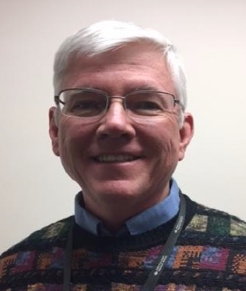
Dr. Weaver received a BS in Engineering Science from Arizona State University followed by medical school from the University of Arizona. He served a rotating internship in the US Navy, then went through the medical officer’s course in Undersea and Submarine medicine and was an Undersea Medical Officer on the USS Canopis (AS-34) for two years. After discharged he served in the Naval Reserves with SEAL Team 1-3-5 for a few years. After discharge from Active Duty he trained in Internal Medicine, with fellowship training in pulmonary and critical care at the University of Utah. After completion of fellowship he became the Medical Director of Hyperbaric Medicine and Co-director of the Shock Trauma Respiratory ICU at the Level One trauma center, LDS Hospital, Salt Lake City, Utah for 20 years. He was a co-investigator for the ARDSnet of the NIH and was the principle investigator of a randomized controlled trial of hyperbaric oxygen for acute carbon monoxide poisoning, published by the New England Journal of Medicine. He is a former president of the Undersea and Hyperbaric Medical Society. He has authored and co-authored hundreds of papers, abstracts and book chapters. For 10 years he had a senior leadership role in the DoD effort to conduct blinded randomized trials of hyperbaric oxygen for post-concussive syndrome due to War-related mild traumatic brain injury. Research activities include study of neural auto-antibodies following carbon monoxide poisoning and a randomized trial of hyperbaric oxygen for sequelae months to years after brain injury. He enjoys off-road UTV and adventure motorcycle riding, SCUBA diving, and spending time with his family.
